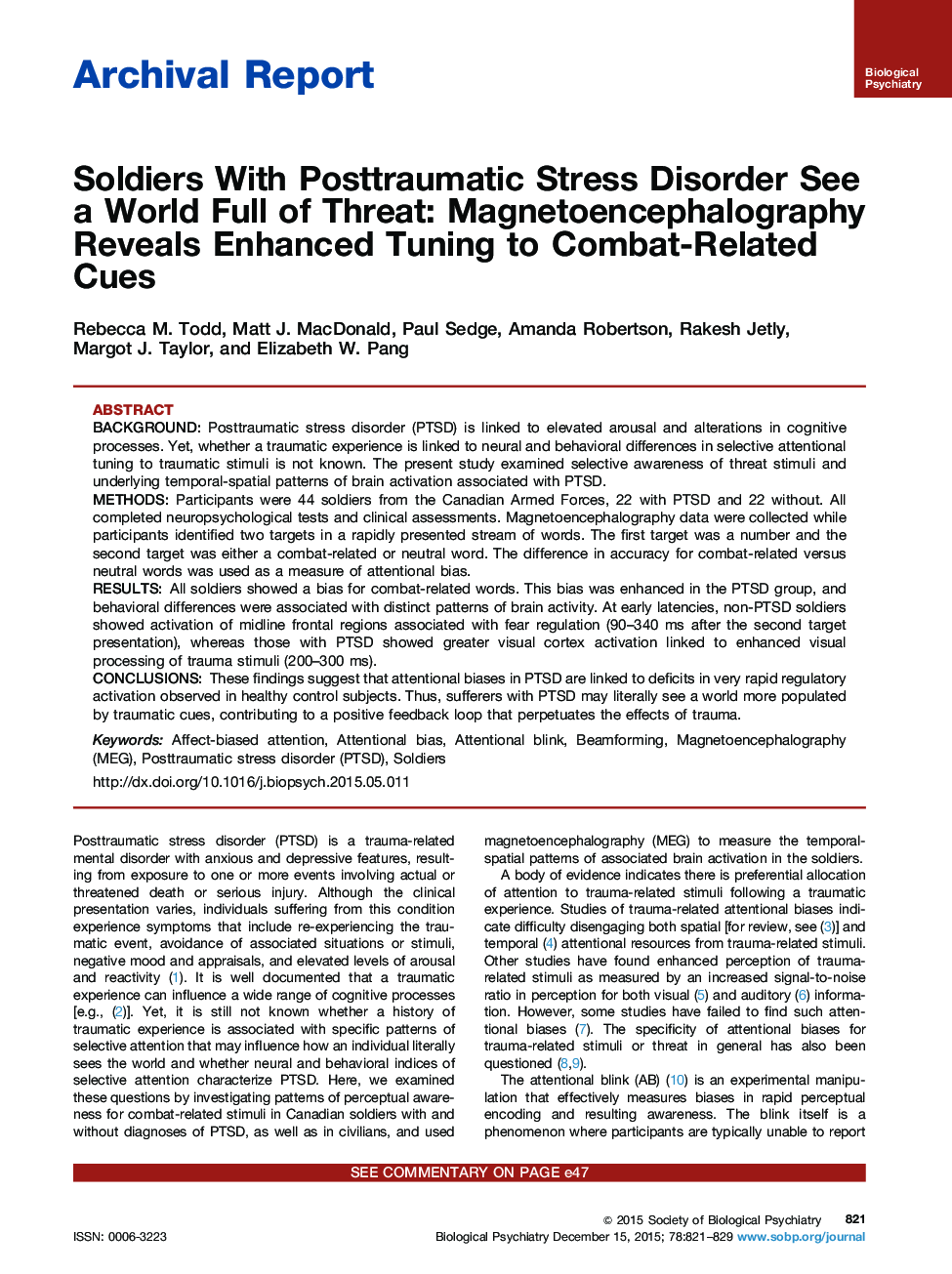| کد مقاله | کد نشریه | سال انتشار | مقاله انگلیسی | نسخه تمام متن |
|---|---|---|---|---|
| 6226699 | 1276400 | 2015 | 9 صفحه PDF | دانلود رایگان |
BackgroundPosttraumatic stress disorder (PTSD) is linked to elevated arousal and alterations in cognitive processes. Yet, whether a traumatic experience is linked to neural and behavioral differences in selective attentional tuning to traumatic stimuli is not known. The present study examined selective awareness of threat stimuli and underlying temporal-spatial patterns of brain activation associated with PTSD.MethodsParticipants were 44 soldiers from the Canadian Armed Forces, 22 with PTSD and 22 without. All completed neuropsychological tests and clinical assessments. Magnetoencephalography data were collected while participants identified two targets in a rapidly presented stream of words. The first target was a number and the second target was either a combat-related or neutral word. The difference in accuracy for combat-related versus neutral words was used as a measure of attentional bias.ResultsAll soldiers showed a bias for combat-related words. This bias was enhanced in the PTSD group, and behavioral differences were associated with distinct patterns of brain activity. At early latencies, non-PTSD soldiers showed activation of midline frontal regions associated with fear regulation (90-340 ms after the second target presentation), whereas those with PTSD showed greater visual cortex activation linked to enhanced visual processing of trauma stimuli (200-300 ms).ConclusionsThese findings suggest that attentional biases in PTSD are linked to deficits in very rapid regulatory activation observed in healthy control subjects. Thus, sufferers with PTSD may literally see a world more populated by traumatic cues, contributing to a positive feedback loop that perpetuates the effects of trauma.
Journal: Biological Psychiatry - Volume 78, Issue 12, 15 December 2015, Pages 821-829
